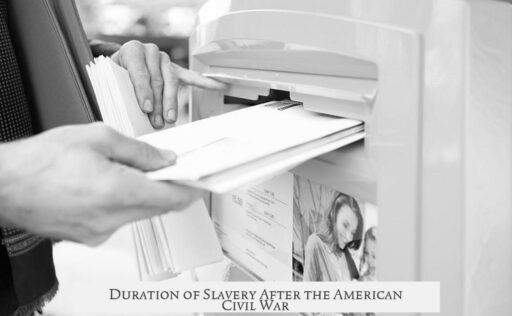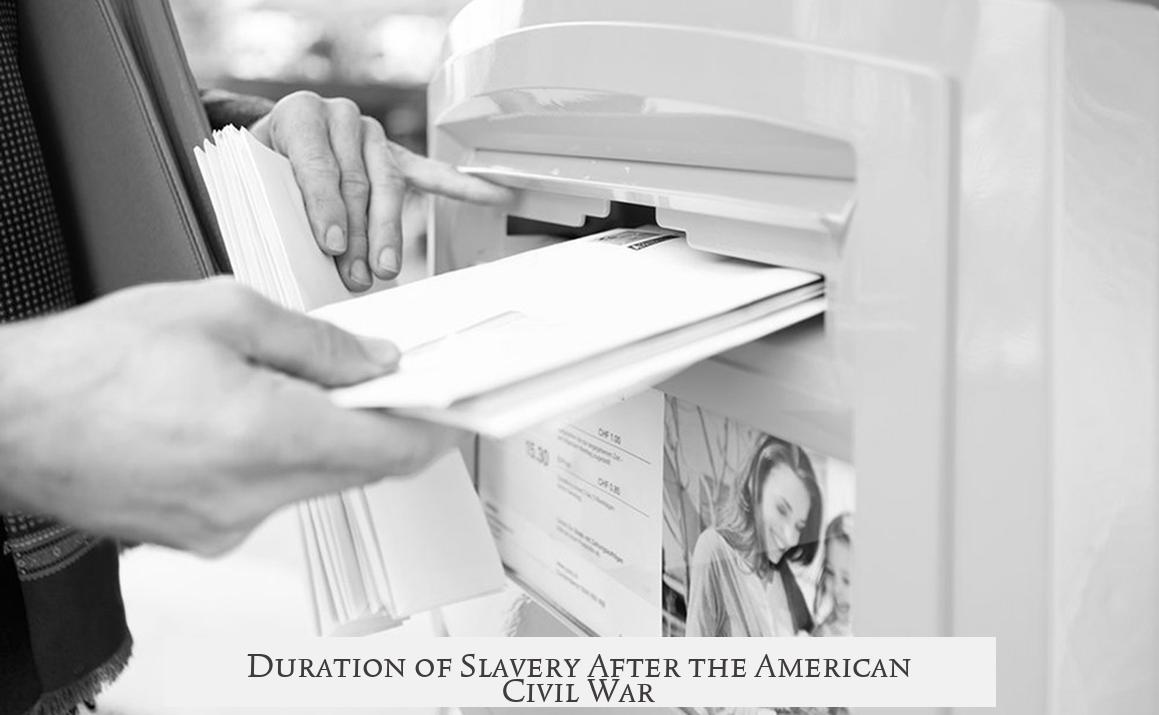Slavery in the United States officially ended with the ratification of the 13th Amendment on December 18, 1865, but its persistence continued in various forms well beyond the American Civil War through legal loopholes, social practices, and economic exploitation.
The 1863 Emancipation Proclamation freed slaves in Confederate states, supported by Union troops occupying the South for about 14 years. Union generals actively enforced it, reading the proclamation publicly to inform enslaved people of their freedom—even in remote areas like Texas, where the last official reading marks the Juneteenth celebration. This military presence made it practically impossible to maintain traditional slavery in rebel states.
However, the 13th Amendment did not abolish slavery entirely. It allowed involuntary servitude “as a punishment for crime,” creating a gateway for widespread exploitation. Southern states quickly enacted Black Codes to criminalize minor behaviors of black citizens, justifying arrest and forced labor. For example, in Mississippi, offenses as trivial as using “obscene language” could lead to forced labor.
- Convict leasing emerged as a brutal system where prisoners, mostly African Americans, were leased to work on plantations, mines, or railroads. In Alabama by 1898, convict leasing generated 73% of state revenue. Conditions were horrific, with a quarter of these convicts dying annually due to abuse.
- Sharecropping replaced slavery as the dominant labor system. Freedmen were promised land but were either denied purchase or given small plots under coercive conditions. They had to give landlords half their crops and purchase supplies on credit, often plunging them into debt peonage. This economic cycle trapped many in servitude akin to slavery.
- Vagrancy laws and labor contracts tied black workers to plantations. Being jobless could result in arrest and forced labor for meager wages. Attempts to escape led to physical punishment and unpaid forced work. This disguised form of slavery persisted into the early 20th century.
- Fake apprenticeships bound former slaves legally to their former masters, preventing economic independence. Illiteracy and lack of legal recourse hindered escape from these contracts.
Legally, African Americans in some states like Kentucky couldn’t testify against whites, leaving them vulnerable to abuse without justice. Some black people remained enslaved in states like New Jersey long past the war’s end, with recent research revealing up to 400 slaves remained there well after emancipation was declared elsewhere.
In rare cases, freed people and even Confederates relocated to Brazil, where slavery remained legal until 1888. Between 10,000 and 20,000 Americans moved there, some to keep slaveholding practices alive. This migration underscores the complexities in slavery’s end in the US.
Physical imprisonment and outright violence were also used to maintain forced labor. Workers lured into jobs were sometimes locked up, beaten, or shackled to prevent escape. The lack of literacy and legal protections made advocacy for freedom nearly impossible for many.
Although slavery’s formal abolition occurred in the 1860s, these systems of forced labor, exploitation, and racial oppression effectively extended slavery well into the 20th century. The transformation from chattel slavery to sharecropping, convict leasing, and other forms of coercion obscured slavery’s end but did not eradicate its function.
“Slavery still exists in the United States, though it is illegal today, as documented by modern human trafficking and forced labor cases.”
The legacy of slavery informs ongoing struggles against systemic racism, mass incarceration, and economic disparity that trace back to these post-Civil War systems of control.
- Slavery legally ended with the 13th Amendment in December 1865 but persisted in other forms.
- Black Codes and vagrancy laws criminalized everyday behaviors to re-enslave freedpeople through forced labor.
- Convict leasing and sharecropping functioned as economic slavery, extending coercion into the 20th century.
- Legal restrictions and violence prevented African Americans from attaining true freedom for decades beyond the war.
- Some enslaved people remained unaware of their freedom for years due to poor communication and isolated regions.
- Migration to Brazil and systemic abuses show slavery’s persistence beyond official US laws.
How long did legal slavery persist after the Civil War ended?
Slavery officially ended with the 13th Amendment in December 1865. However, some forms of forced labor continued through legal loopholes like convict leasing and black codes well into the early 20th century.
Were all slaves freed immediately after the Emancipation Proclamation?
No. The proclamation applied only to rebellious areas. Slaves in border states and some others were freed later, especially after the 13th Amendment, with Kentucky having about 40,000 slaves last freed.
Did slavery transform into other systems after the war?
Yes. Slavery shifted to sharecropping and systems resembling serfdom. These kept African Americans economically tied to landowners under harsh conditions.
How did laws like the Black Codes affect African Americans after slavery?
Black Codes criminalized minor offenses to arrest blacks and force them into convict leasing. This system was slavery by another name, exploiting African Americans for labor while generating revenue for states.
Did all enslaved people know about their freedom right after the war?
Many slaves were unaware the war had ended and did not realize they were free for several years, especially in remote areas. Some didn’t gain freedom until Reconstruction enforcement reached them.




